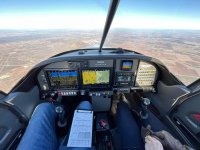Autopilot Mode Reversion
Good Morning,
We are happy to help work through these events, to help better understand how the system handles an unexpected flight condition. In these cases it is often helpful to review the flight data logs generated from the flight to understand the series of events leading up to the failure, as we keep a detailed account of Autopilot commands and active modes, among many other items, in the 1 Hz datalogs. We are always happy to review the logs with you if you send them over to us at [email protected].
Thanks,
Justin
Also thanks for this posting and thanks for Garmin for helping with the operation of the A/P. Seems logical that the A/P would disconnect but also seems logical that the A/P would help us "keep the shiny side up". Recently I lost GPS on the 750 and the A/P disconnected which at the time seemed logical but a little inconvenient as I was in the final stages of my approach. I always thought the A/P was just a luxury and hand flying the airplane is what I was trained to do but you know the drill. I guess I need to read the operating manual more carefully but it is long....... I have to admit I would have been a little more than tense under those conditions when all of a sudden the A/P turns into my enemy. For me I knew all I had to do was a few minutes of "aviating" but for this person he had a very uncertain time period to endure. Hats off for staying cool, flying the airframe and documenting the training video for us all to learn !!
Good Morning,
We are happy to help work through these events, to help better understand how the system handles an unexpected flight condition. In these cases it is often helpful to review the flight data logs generated from the flight to understand the series of events leading up to the failure, as we keep a detailed account of Autopilot commands and active modes, among many other items, in the 1 Hz datalogs. We are always happy to review the logs with you if you send them over to us at [email protected].
Thanks,
Justin





